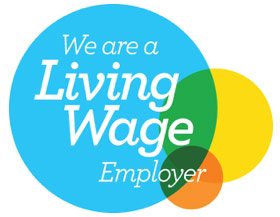
On average, a person in the UK will spend just less than 35 hours of the week working, and think about quitting their job around 16 times a year; that’s about once every three weeks. If you’re feeling low about work, or you’re finding it difficult to retain employees, your company might need to improve professional boundaries.
What are boundaries?
Boundaries can be understood as your needs, wants and limits in different situations. They might include the way people treat you, behaviour that you consider acceptable, and consequences that follow when those boundaries are crossed. Although setting boundaries is not a new idea, it has become more widely understood in recent years.
Boundaries are within your sphere of influence; they are not about controlling another person. At work, a boundary might look like, ‘My work day ends at 5:30, and so that is when I will stop working.’ Although having boundaries at work sounds simple in principle, many find them difficult to keep to.
Working from home, and how it made boundaries vanish
During the pandemic, a huge amount of businesses and employees made the transition from working in an office to working from home. This had a huge number of benefits; research shows that it led to employees working more quickly, reduced distractions and improved wellbeing. One of the main benefits that was reported was a better work/life balance.
Those who felt this benefit reported a number of contributing factors; a lack of commute meant more time in the day, and working from home made it easier to cook, practice hobbies, exercise, and get to appointments. However, since the pandemic, research suggests that work from home employees and workers are spending 2 hours more working than before.
This research suggests that employees are less likely to observe working hours, more likely to work through sickness, take shorter lunch breaks and have heavier workloads than pre-pandemic workers.
Although working from home improved aspects of our lives, it also made our work a lot less visible. For many of us, work is accessible at all hours of the day, and our task lists are longer than ever. As our work is no longer being observed in the same way, there are less opportunities for our colleagues, supervisors, managers and directors to ensure that we’re going to lunch, clocking out on time, and taking time off when we need it.
What are the long term effects of setting boundaries?
If you frequently find yourself working unpaid overtime, skipping your breaks or working outside of your job description, you’re at risk of burnout, resentment and a poor work/life balance. If you work in a managerial capacity, a workplace culture which does not prioritise a good work/life balance is likely to result in high staff turnover, which leads to high recruitment costs and the loss of skilled workers to competitors.
If you’re an employee, setting boundaries is going to help you improve your work/life balance, and make those difficult days at work far easier to manage. If you have people working for you, setting boundaries is an excellent way to model good practice to your employees. By stopping work when your work day ends, taking your full lunch break, and taking time off when you’re sick, you're modelling to your staff that you respect your time, energy and limits, which will encourage them to do the same.
Setting boundaries: it’s as simple as a traffic light
When we’re setting professional boundaries, we can use a traffic light system. Setting professional boundaries at work, or in any environment, can be broken down into green, yellow and red.
Setting a boundary on ‘Green’ is communicating a boundary in a kind and empathetic way, and is the best way to start a conversation about a boundary you haven’t talked about before. If you’re an employee, this could look like a chat with your manager about how you’ve realised you're working outside of your job description and that you’d like to be compensated for this, or you’re happy to return to your normal workload. If you’re a manager, this could be a company-wide email reminding people to sign off at the end of their workday, and to speak up if they’re struggling with the workload.
Setting a boundary on ‘Yellow’ is a gentle reminder when you notice that the boundary is being crossed. If you’re an employee, this could be reminding a supervisor that you won’t have time to finish a task today and you’ll pick it up tomorrow, rather than staying late to meet a last minute deadline. If you’re a manager, this could be a private chat with an employee who you’ve noticed sends emails outside of working hours, to make sure they know you need them to sign off on time.
Setting a boundary on ‘Red’ is communicating a firm limit, and enacting the consequences of that boundary. If you’re an employee, this could be taking your full lunch when someone in your team has asked you to cut it short. If you’re a manager, it could be a sit down meeting with someone who frequently does extra work on the weekends, and communicating that this isn’t acceptable. Setting boundaries on ‘Red’ is often the most difficult thing to do, as it requires you to follow through with your expectations. It is also the most important, as without it, setting boundaries is obsolete.
Ready to set your boundaries?
Setting professional boundaries at work isn’t a preference, it is essential for your health and wellbeing. Although this might feel difficult at first, it’s one of the best things you can do to take care of yourself, and find a work/life balance you are happy with. And remember, if you’ve noticed that your professional boundaries are constantly crossed, it might be time to quit.
Tweet us @TranscenditUK











